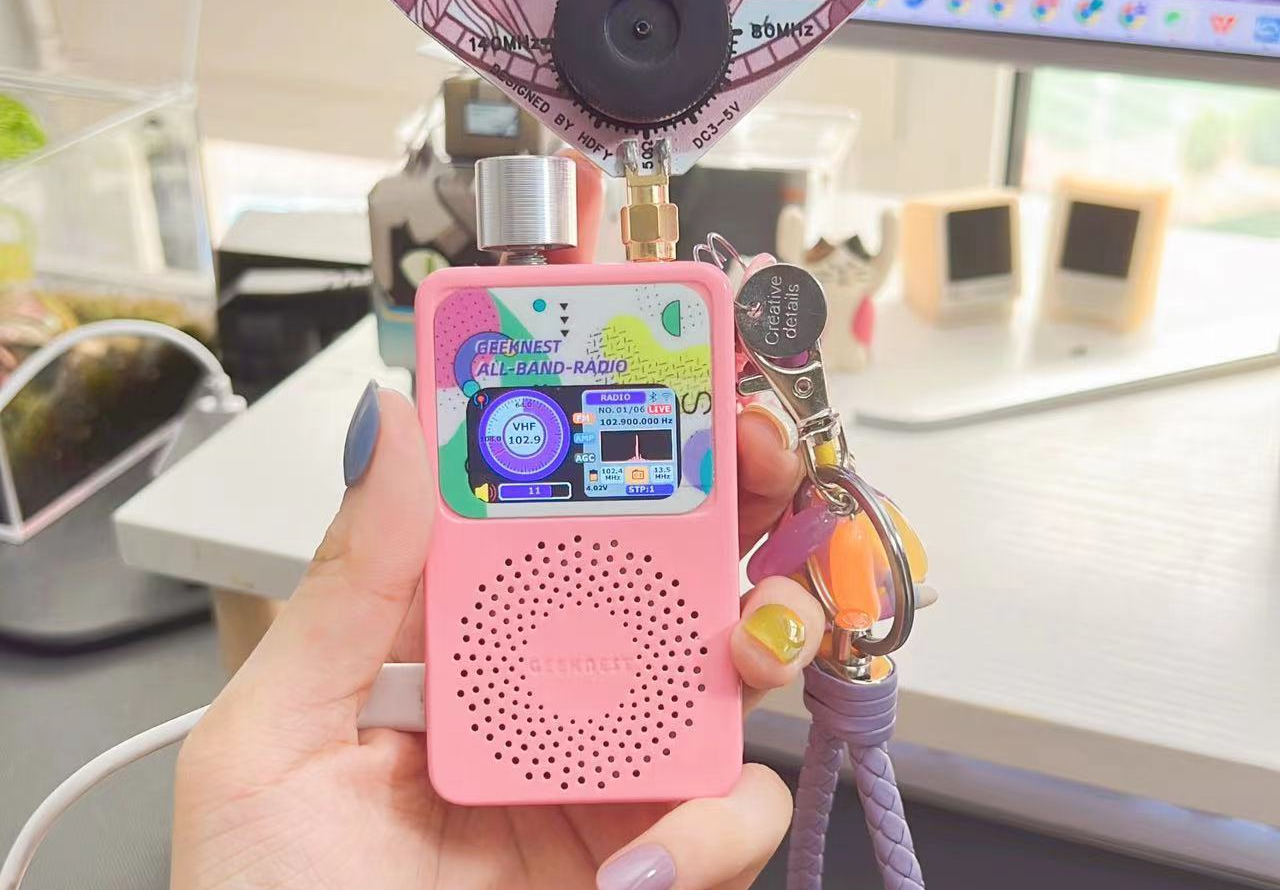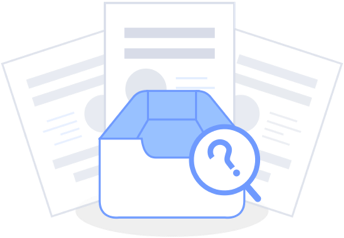 Completed
CompletedESP-full Band Radio For Beginner Series
PRO ESP-full Band Radio For Beginner Series
ESP-full Band Radio For Beginner Series
License
:CERN Open Hardware License
Description
Project Description
- This project is intended for radio amateurs and anyone interested in building a full-band (including AM, FM, SSB) radio radio on top of the core chip SI4735. The frequency range is 150kHz to 30MHz for AM and SSB modes and 64 to 108MHz for FM mode.
- There are two PCBs in this project, the motherboard and the expansion version. The motherboard includes all basic functions, including full-band radio signal reception, processing and playback, and function key operation; The expansion board needs to be used based on the motherboard, and after connecting to the motherboard, it can realize: time display and time, temperature and humidity display, and connect to the battery to supply power from the battery.
Most of the electronic components use JLC basic library components, and non-basic library components mainly include:
- TC8002D, audio amplification chip
- The LCD screen uses a 1.47-inch 12-pin soldering type
- WS2812B-B 5050 Multicolor LEDs, for decoration
- The crystal oscillator uses the 32768 active crystal oscillator
- The headphone jack is a PJ-320B socket
- The antenna socket is an SMA socket, which can be used to purchase an antenna with an SMA connector
- Magnetic rod coils that support AM signals
- SI4735-D60-GU in SSOP-24 package
- ESP32-S3-WROOM-1U-N16R8
- The clock chip RX8025T-UC, which is temporarily timed by pressing a key and encoding. How to display the time: Press the Sit Down button. To match the time, press and hold the button in the lower left corner, the corresponding number will flash, and use the encoder to match the time.
- Temperature and humidity sensor SHT30, if you don't want it, you can not solder, the temperature and humidity will not be displayed, and the program can work normally.
- Charging management chip Yingjixin IP5306, charging control chip, click to turn on, double click to turn off, and add a self-locking switch, so that it can also be turned off when charging.
Open-source protocol
CERN Open Hardware License.
Project-related Features
1. Main interface function
- Volume adjustment function: short press the volume control button, turn the encoder, and adjust the audio volume of the radio;
- Modulation mode selection: short press the modulation mode selection button, turn the encoder, you can choose to receive the radio signal under the 4 modulation modes of AM\FM\USB\LSB, and press the encoder down to determine the current selection;
- Manual adjustment function: short press the manual adjustment button, turn the encoder, and manually adjust the received radio signal frequency in the forward and reverse direction according to the unit of 0.1Mhz;
- Quickly lock the target band function: due to the large range of radio signal bands covered by the full-band radio, the function of quickly locking a certain band is needed to help reduce the workload of manual adjustment; Short press the quick band selection button, turn the encoder, you can quickly locate the receiving band to 20M\40M\80M and other bands, press the encoder down, indicating that the current selection is determined.
2. Expansion board function
Expansion module: including power management, clock display and time alignment, temperature and humidity detection functions;
Press and hold the button in the lower left corner of the main interface to display the extended interface:
1. Timing function: Short press the function button in the lower left corner to switch the timing object (hour, minute, second, year, month, day), and turn the encoder to align the time.
Motherboard design introduction and function description: https://www.bilibili.com/video/BV1Lv4y1E7tK/
Extended version design introduction and function description: https://www.bilibili.com/video/BV1Ph4y1t7tR/
Project Properties
This project is the first public and is my original project. The project has not won an award in another competition.
Software Description
Based on the Arduino IDE framework, the core program logic is as follows:
[Initialization]: Initialize equipment and functions, including I2C/display/SI4735/button/encoder/power amplifier;
[Main Cycle]: 1. Read the encoder and buttons; 2. Read SI4735 status; 3. Set SI4735 (frequency, volume, etc.); 4. The interface is drawn and displayed;
Software program: https://pan.baidu.com/s/1UT2vRgS8FM4i_OaY9g8Cfg?pwd=wfm8
Design Principles

Enclosure Design
The shell mainly comprises front panel, front shell, rear shell, rear panel 4 to parts.
The front panel is made of PET material, the back is glued for easy pasting, and the back panel is a fully transparent acrylic sheet; The front and rear shells are 3D printed in resin material, and the front shell is painted, Pantone color number 1795C.
The shell customization is completed in JLC panel customization and Jialichuang three-dimensional monkey.


Enclosure custom design file: https://pan.baidu.com/s/1UrcPpjYb4h_5HnGpvzcShg?pwd=ezoz
The shell design boss is here (B station ID): 🙇 ♀️ @一个昵称取一天
Introduction to the shell customization method and installation instructions: https://www.bilibili.com/video/BV1Ph4y1t7tR/
20230525 Updated aeroband design
See schematic and PCB for details.
Modify the scheme:


Based on the Poké Ball version (V3), it has been revised again. Compared to the previous version of the Poké Ball, the differences include:
1. Merge the motherboard & extended version, and modify the PCB to a 4-layer structure
2. Package adjustment: The packaging of some resistive components has been changed from 0603 to 0402, and the risk of novice overturning is high, so please be cautious about hand welding
3. The MCU is replaced by ESP32 chip & other chips from ESP32S3 module
4. The radio chip adopts two versions: SI4732 and SI4735
5. The complete digital audio scheme is adopted, and the 4732 version cannot support both analog and digital audio signal output due to the lack of pins, so the single sideband function is removed and the FM\AM\AIR is retained;
6. Added Bias-T support
7. Replace the magnetic rod coil with an external antenna using an SMA socket
8. Bandpass filter circuit and frequency band selection circuit (PE4283 is recommended for electronic switches)
9. Reduce signal interference and find ways to save power
B station video🔗:https://www.bilibili.com/video/BV1hV41137nJ/
- Schematic diagram and PCB of mini version radio (4-layer structure)
- Description of the new firmware of the radio
- Active FM loop doughnut antenna schematic &PCB, cr@ Flying Fish, Flying fish boss authorized release; Do not remove the words designed by hdfy when copying.
- Radio Enclosure & Panel Design Files, cr@Sandy Link: https://pan.baidu.com/s/1JsxtqkOMRJWLDvcYEdlYgw?pwd=x3k8
- All new open source files contain the keyword [V4], please be careful to distinguish them from historical open source files.
- Before purchasing the screws and batteries required for the housing, please carefully read the documentation in the housing design documents.
About [Active FM Ring Donut Antenna]
- The pad is reserved here, but there is no 4.7kΩ resistor on the schematic, it is used to adjust the Q value, pay attention to the 4.7kΩ soldering method.

Straddle welding
- The R3 resistor in the schematic is packaged as 0402.
Instructions for using the firmware of the V4mini version of the radio

1. Tune mode: [LIVE] is displayed in the upper right corner, and it supports saving less than 20 frequencies as fixed channels, which is convenient for listening at any time;
1) Power on and off: short press the encoder; Power off: Long press the encoder;
2) Volume adjustment: In LIVE mode, rotate the encoder left and right to adjust the volume value; Short press the encoder, mute on/off;
3) Switch to listen to the saved channel In LIVE mode, short press button 2 to switch to the previous saved channel; Press button 3 to switch to the next saved channel;
4) Turn on/off Bias-T/AGC in LIVE mode, press and hold button 2 to turn on/off AGC; Press and hold button 3 to turn on/off Bias-T;
5) Enter FM mode, search for stations manually/automatically/switch modulation mode In LIVE mode, press and hold button 1, [LIVE] in the upper right corner will change to [FREQ] to enter FM mode;
1) In FREQ mode, the frequency value can be adjusted by rotating the encoder left and right, and the unit step size is displayed in STP in 0.1MHz, which can be selected by 1/5/10/20/100; Short press the encoder to switch the step size;
2) In FREQ mode, short press button 1 to switch to SEEK mode, and rotate the encoder left and right or short press buttons 2 and 3 to switch the positive and negative directions of searching;
3) Save the manual/automatic search channel to the tune-up mode, so that you can listen directly next time In FREQ/SEEK mode, press and hold button 3 to add a new channel; Press and hold button 2 to automatically save the searched frequency to the current channel;
4) Switch modulation mode (AM/FM/AIR) In SEEK mode, short press button 1 to switch to MODE mode, and press and hold button 2 and 3 to switch to the previous one/next modulation mode; When the MODE is displayed as AM, short press buttons 2 and 3 to switch to the previous or next AM band (MW1/MW2, /SW1/SW2, etc.)
5) Return to tune mode, adjust the volume or listen to the saved channel Press and hold button 1 to return to tune mode;
Added a dial 3D file for use on the antenna (please see Attachment - Knob), which can be used to modify/print by those who need it;

Update the old version (Poké Ball version assembly BOM): M*15mm model is recommended for screws;
The latest version of the file: ESP32_Radio_mini_SI4735_V4_2.4_0908, ESP32_Radio_mini_SI4732_V4_2.4_0908.
- Standby power consumption optimization
- FM headphone antenna optimization
New firmware available for the new Poké Ball version - FW_ESP32S3_Radio_v231004.bin, please download it in the attachment.
The buttons are in the upper row from left to right
Key 1. LIVE mode
Key 2. UP
Key 3. DOWN
Key 4. Theme switching
Bottom row from left to right
Key 5. Clock mode
Key 6. MODE
Key 7. SEEK mode
Key 8. FREQ mode
1. Tune mode: [LIVE] is displayed in the middle of the screen, and it supports saving less than 20 frequencies as fixed channels, which is convenient for listening at any time;
1) Volume adjustment - In LIVE mode, rotate the encoder left and right to adjust the volume value; Short press the encoder, mute on/off;
2) Toggle to listen to saved channels In LIVE mode, short press button 2 to switch to the previous saved channel; Press button 3 to switch to the next saved channel;
3) In LIVE mode, press and hold button 2 to turn on/off AGC;
2. FM mode: [FREQ/SEEK/MODE] is displayed in the middle of the screen, which supports manual/automatic search for stations/switching modulation modes (AM/FM/AIR)
1) Manual search - short press button 7 to enter SEEK mode, and rotate the encoder left and right to automatically search the station forward and backward;
2) Automatic search - short press button 8, in FREQ mode, rotate the encoder left and right, switch the forward and negative direction of search channel;
3) Save the manual/automatic search channel to the tuning mode, so that you can listen directly next time - In FREQ/SEEK mode, press and hold button 3 to add a new channel; Press the button 2/3 to switch to the new/old channel you want to save the frequency; Press and hold button 2 to automatically save the searched frequency to the current channel;
4) Switch modulation mode (AM/FM/AIR) - short press button 6 to switch to MODE mode, long press button 2 and 3 to switch to the previous one/next modulation mode; When the MODE is displayed as AM, short press buttons 2 and 3 to switch to the previous or next AM band (MW1/MW2, /SW1/SW2, etc.)
5) Return to tune-in mode, adjust the volume or listen to the saved channel - short press button 1 to return to LIVE mode;
Currently, bandwidth/BFO control is not supported
Designed by chimchim4482 (from OSHWHub)
Design Drawing
 The preview image was not generated, please save it again in the editor.
The preview image was not generated, please save it again in the editor. Empty
Empty


Comment